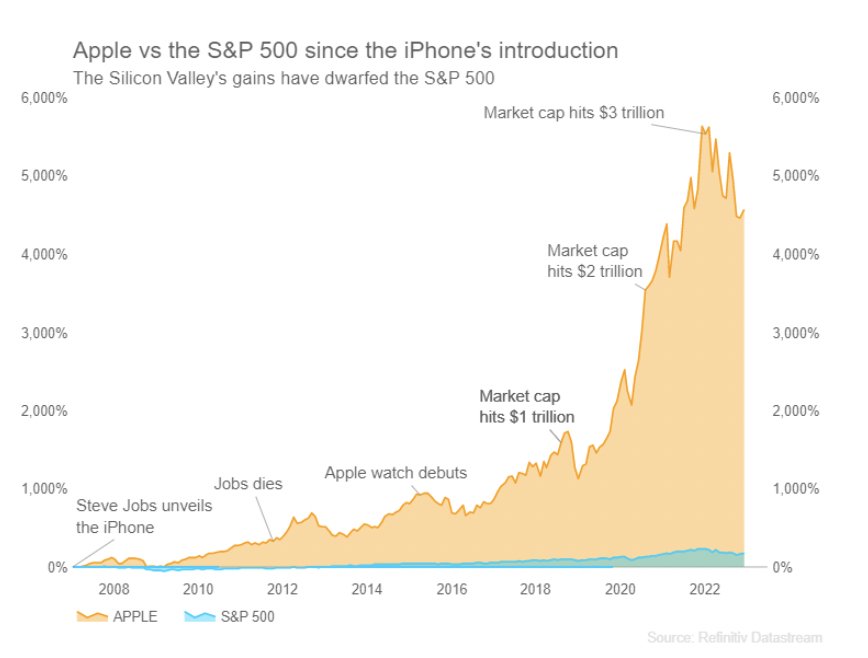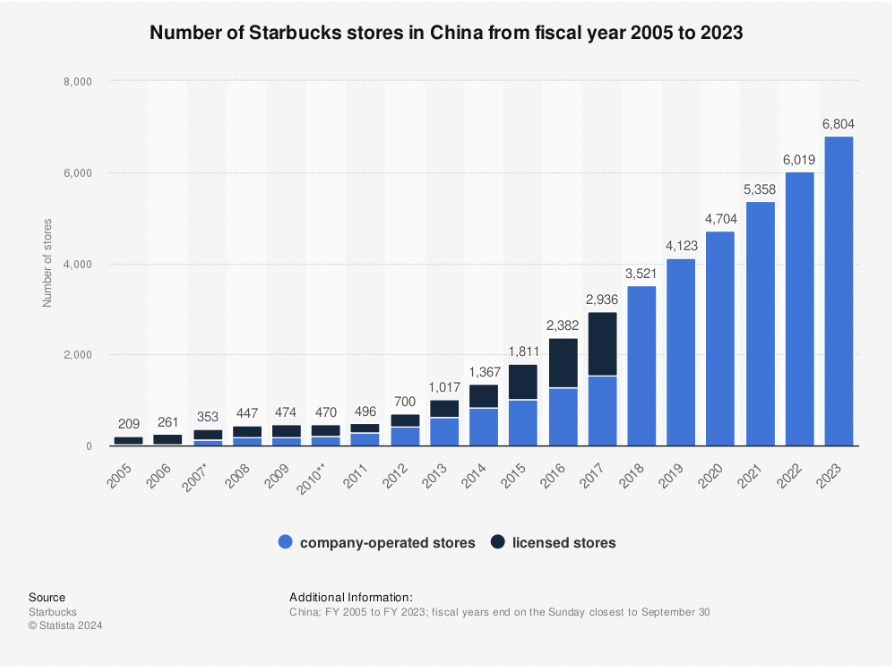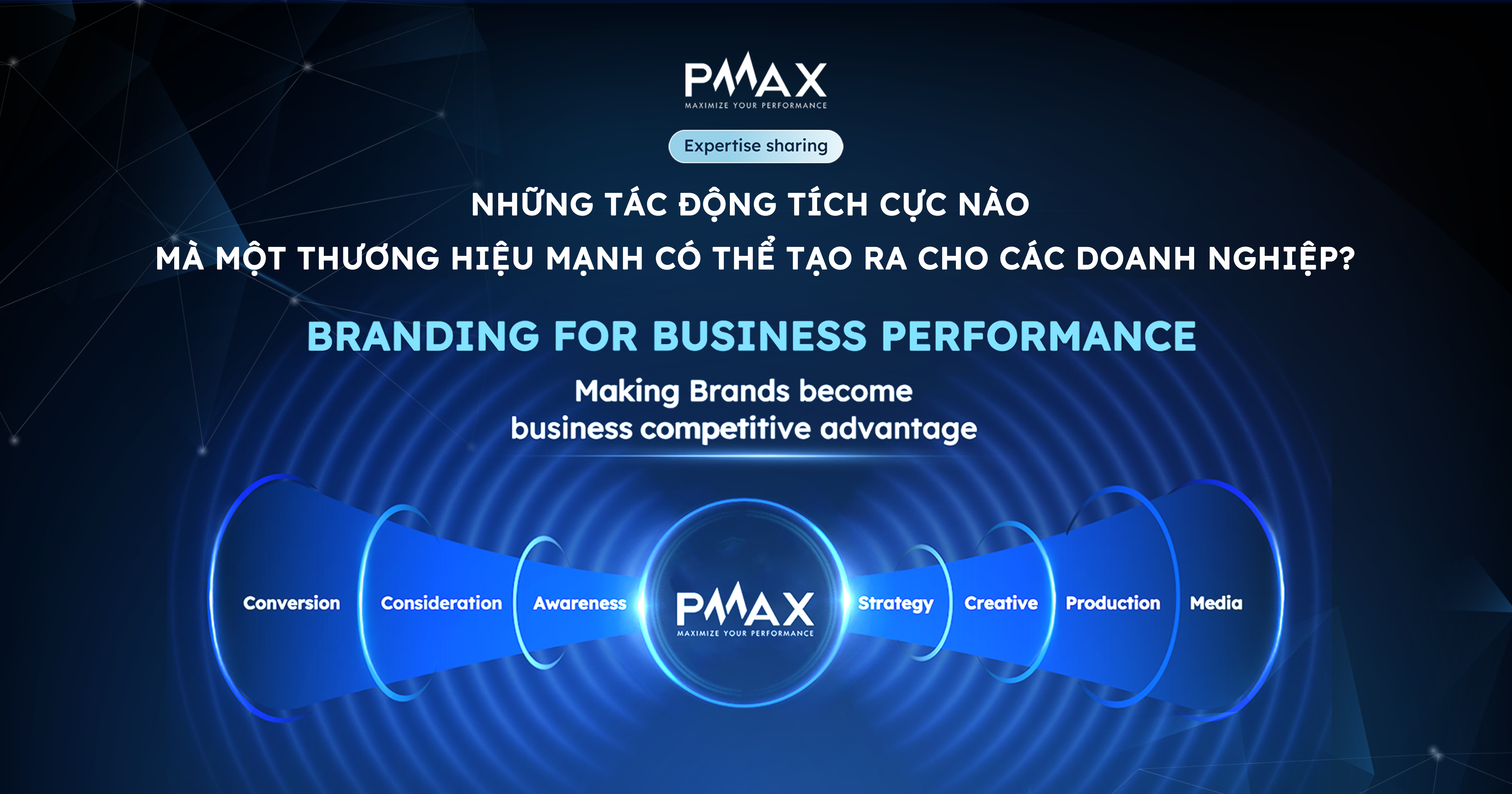A brand is more than just a symbol or name; it is a valuable intangible asset that significantly contributes to a business’s sustainable growth and value creation. A strong brand can profoundly influence various aspects, from stock performance and strategic business adaptability to market penetration and expansion. This article analyzes the role of a strong brand in driving stock performance and ensuring business sustainability, with notable examples from Apple, Walmart, Tesla, Starbucks, and McDonald’s. Through these examples, we will understand how brands create measurable economic value for businesses.
A Strong Brand Boosts Stock Performance with Measurable Value
Measurable Brand Value
One of the most illustrative examples of brand strength is the financial sector. According to Brand Finance, a consultancy specializing in business valuation and strategy, companies with leading brands have been tracked for over a decade. An investment strategy focusing on companies with high brand value yields nearly double the average returns compared to the entire S&P 500.
Apple is a prime example of the relationship between a strong brand and stock performance. For several consecutive years, Apple has maintained its position as the world’s most valuable publicly traded company, with a market capitalization of $2.7 trillion as of September 2, 2022.

Apple’s rise is not solely due to technological breakthroughs but also the result of building a strong, reliable brand. Despite concerns about maintaining its market-leading position, Apple demonstrates how a strong brand can positively impact stock value, increasing shareholder confidence and investment. This reflects not only Apple’s financial strength but also the significant influence of its brand on stock value.
Stability and Economic Predictability
While not the only factor ensuring stock performance, a strong brand helps mitigate investment risks and protect portfolios. Reduced risk translates into higher market confidence and increased support from financial audiences, encouraging further investment. Companies with strong brands often exhibit better resilience during economic downturns, providing investors with a more stable and reliable profit prediction. Greater certainty in revenue and profit allows investors to forecast economic returns with more confidence.
This shows that a brand is an important asset that delivers measurable returns for a business and its shareholders. Since 2010, this has been supported by a global brand valuation standard (ISO 10668), encompassing various acceptable valuation methods and approaches.
A Strong Brand Provides More Options and Ensures Sustainability in a Competitive Economy
In liberalized markets, a strong brand offers a competitive edge by enabling target customers to distinguish one competitor from another. Brands encourage and support competition based on additional values beyond default factors like price, quality, and reliability.
Walmart exemplifies how a strong brand can offer more choices and ensure business sustainability. Walmart has integrated data from both online and in-store operations to enhance supply chain management, allowing the company to respond quickly and flexibly to changing market demands. This strategy has led to impressive e-commerce revenue growth, such as a 74% increase in the first quarter of 2020 and a 37% increase in the first quarter of fiscal 2022 (Digital Commerce 360).

Walmart’s ability to handle high demand through its supply chain and logistics operations. E-commerce revenue growth for Walmart increased by 74% in Q1 2020 – Source: Locus
This approach not only helps Walmart address logistical challenges but also strengthens its competitive position in the ever-evolving retail market. By offering a wide range of products and services through multiple sales channels, Walmart demonstrates that a strong brand is not just an intangible asset but also a practical competitive advantage, helping businesses thrive in a fiercely competitive economy.
As a result, most industries in liberalized economies provide increasing choices for customers, creating better economic value and even outperforming economies that do not emphasize brand investment.
A Strong Brand Helps the Economy Adapt Quickly and Thrive
Markets constantly demand brands to be ready for change and continuous adaptation, often accelerated by technological advancements. Strong brands facilitate quicker market adaptation by fostering more flexible interactions between buyers and sellers.
Companies like Tesla clearly demonstrate this capability. Tesla, with its direct sales strategy and innovations in electric vehicles, has created a new retail model that many traditional automakers are now emulating. This not only helps Tesla grow but also drives the entire automotive industry to transform and modernize (CleanTechnica).

Tesla created a new retail model that many traditional automakers are now emulating – Source: Reuters
Through branding activities for new innovative products, strong brands effectively “educate” consumers, helping them overcome uncertainties when purchasing newly launched products. This, in turn, stimulates continuous innovation among competitors, ultimately benefiting consumers from the competition to improve products and services.
A Strong Brand Drives Growth Across Geographical and Cultural Boundaries
Brands help businesses overcome geographical and cultural barriers. Global brands are significant assets for their home countries, essential for achieving international success and a considerable source of international competitiveness. Conversely, strong local brands provide effective, consumer-focused responses to foreign competition. At the local level, strong brands attract employees and business partners to the community, stimulating local economies.
Starbucks is a prime example of how a strong brand can penetrate and grow in new markets like China while adapting to local culture and maintaining its brand identity. Starbucks has implemented innovative strategies to adapt to the Chinese market, including creating coffee spaces integrated with local culture and enhancing customer experience through digital technology.

As of the end of 2020, Starbucks had over 4,700 stores in China, making it the company’s second-largest market after the US. Revenue growth in China reached 17% in fiscal 2020 (HBS Working Knowledge).
Additionally, according to the World Intellectual Property Organization (WIPO), developing economies like China are heavily investing in branding to enhance competitiveness. The 2017 BrandZ report indicated that 13 of the world’s top 100 brands were based in China, up from just one twelve years earlier. Although some Chinese brands may not yet be fully globalized, they are undoubtedly increasing in value and reshaping global competition.
A Strong Brand Ensures Business Accountability
Owning a strong brand also means that businesses must be highly responsible to their customers in maintaining their brand reputation. Specifically, brands need to uphold the highest level of accountability in their business practices and commitments to customers. Well-known brands are scrutinized by consumers and journalists to ensure they comply with societal expectations, whether in accounting standards, environmental protection, or ethics.
Conclusion
A strong brand not only boosts stock performance but also creates measurable economic returns for businesses. Exemplary companies like Apple, the world’s most valuable publicly traded company, show that branding can enhance stock value and provide financial stability. Companies with strong brands often exhibit better resilience during economic downturns, allowing investors to reliably predict economic returns. This confirms that branding is a crucial asset and an indispensable factor in a company’s development strategy.
